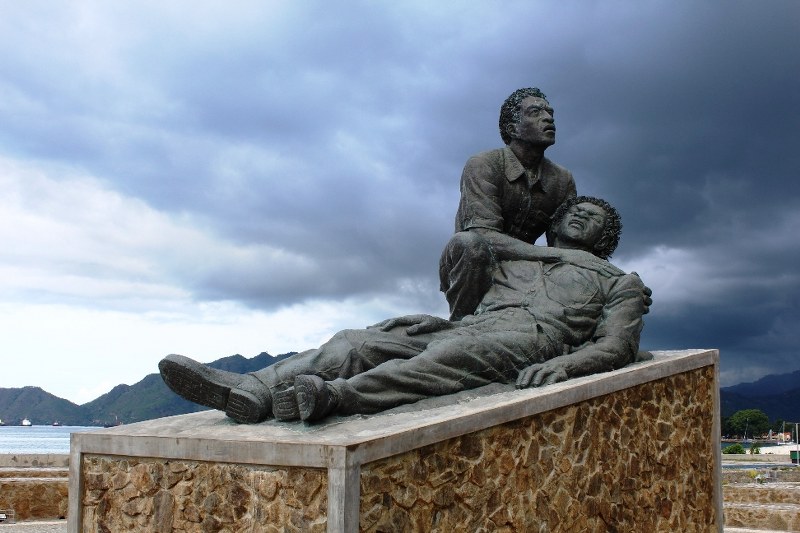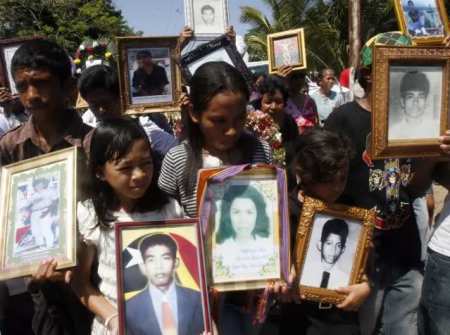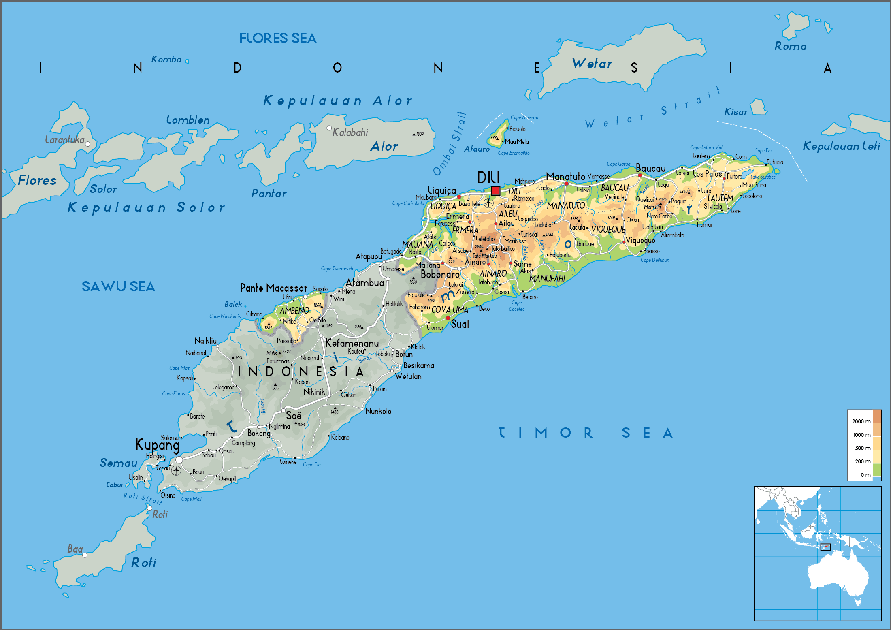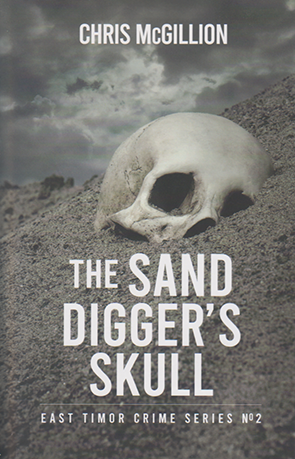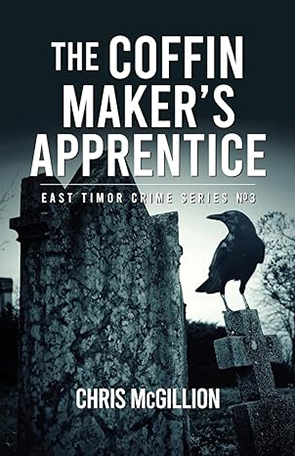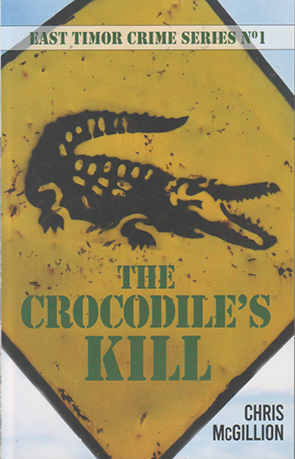
ISBN:9781942078753
East Timor Crime Series #1

- Category:Australian Fiction, Crime Fiction
- Date Read:10 March 2024
- Year Published:2022
- Pages:256

If you don’t think it possible that a crocodile could assume a presence in a crime narrative – that the beast can represent the agency of retribution and justice – then you are probably not familiar with Peter Pan. The ticking clock swallowed by that creature is an ever-present reminder of fate, while the Captain’s hook, somewhat frightening, is also a sign of his weakness. Like Ahab’s leg, his hand has been swallowed by the animal that now hunts him. I’m not sure whether Chris McGillion had anything like this in mind when he wrote his first East Timor novel, The Crocodile’s Kill. I might have asked him had I been further through his novel when I had dinner with him recently. Full disclosure: McGillion lives close to me, but what I have to say about his book is not influenced by that.
For a start, Chris said at dinner that he liked the covers of his books. I don’t. I began his novel knowing I would be meeting him, but had I considered his books on the shelf in a bookstore without this incentive I may have passed them over. We’re told not to judge books by their covers, but barring knowledge of an author’s or a book’s reputation, book covers are all we have in a bookstore (if we can resist the lure of Google). They’re like little advertisements, plying their trade in a sea of competition.
So, the first thing to say is that if you, as does Chris McGillion, like the cover of The Crocodile’s Kill, then well and good. But if, like me, your aesthetic tastes are different, I have to assure you that The Crocodile’s Kill is a novel well worth your time. It is a well-written police procedural set in Timor-Leste, the official name of East Timor, which is an entirely accessible story for Australian and American audiences. Chris McGillion is an Australian author, but he has chosen an American protagonist, presumably to appeal to an American audience where his novel was published; where Timor-Leste is probably a vague name, at best, to most.
FBI Agent Sara Carter grew up in Arizona and is stationed in Flagstaff when we first meet her, hunting down a child abductor who has raped his victim. Carter’s methods are somewhat outside the rules: she assaults the perpetrator, and her actions gain her an unwelcome trip to Timor-Leste to represent INTERPOL in an investigation of a series of abductions of babies from their homes. Her East Timorese counterpart, Vincintino Cordero, is also a cop colouring a little outside the lines, albeit with the right motives. His English is excellent, thanks to many years spent in Australia. He is teamed with Carter to be her interpreter and partner. We first meet him as he intervenes on behalf of a poor Timorese boy who has been knocked from his motorcycle by an arrogant French tourist in a large car. Cordero squeezes what is an enormous amount of money for the boy from the Frenchman in roadside compensation, paid in cash.
With so many titles in this genre available, the question of why to read this novel, which is the first in what is at the moment planned to be a six book series, is fair. In answer, we should first acknowledge that police procedurals and crime fiction in general are about something. They represent to us latent fears and the restitching of the social fabric which has been torn by crime. But they are also inherently supportive of a set of ideological assumptions which seem so commonsensical that we peer through them into a story as though transparent. The police procedural is predicated on a belief in tenets such as rationalism and empiricism, often supported by science or scientific methods. McGillion’s novel, however, foregrounds these Western cultural assumptions because they are not the basis of much traditional East Timorese belief. In villages across Timor-Leste, there have been abductions of about a dozen babies. The local population has become restive. There have been beatings, even killings, of outsiders and misfits. The novel opens with the murder of a young man by a group of Timorese men, not acting as thugs, but responding to a threat in a way they understand. In traditional Timorese culture, demons are real, and the man’s actions – “skulking through the village at night” – and his homosexuality, mark him as a potential demon connected with the abductions.
There is a danger, one might presume before reading a novel like this, of white paternalism responding to what it might term superstition and benighted beliefs. But I think McGillion’s narrative is approaching the subject with different motivations, even though characters acknowledge traditional belief as an impediment to their investigations. Superintendent Basilio Modesto, otherwise known as Buzzi, expresses these thoughts along these lines:
Dili thinks this is just a fucking policing issue. It’s not a policing issue. Have you ever tried to tell a traditional that what he’s believed for generations, what his people have believed for centuries, is nonsense? You and I are modern men Tino [Cordero]. These people live in the Dark Ages. Most of them can’t read or write and haven’t travelled more than twenty miles from the village they were born in . . . And that was to talk to someone even more ignorant than they are.
The belief structures extend all the way back to Timorese legend. Despite their fearful presence, for instance, we learn that a traditional East Timorese would never harm a crocodile. Cordero reflects, “Our creation story has it that a boy once saved a crocodile from dying and, by way of thanks, the crocodile transformed itself into our island.”
The crocodile is a sacred animal in East Timorese culture and is the country’s national emblem. When the body of a man is found on a beach with his arm missing near the beginning of McGillion’s narrative, Dr Brooks, the coroner, observes that local belief holds that, “Crocodiles have ways of identifying bad people not normally available to the police, you see. And then they eat them.” It’s a belief that is given credence by the narrative. When FBI Agent Sara Carter observes young children playing at the water’s edge not far from a crocodile, her local colleague, Estefana dos Carvalho, remarks “maybe he’s just eaten his quota of bad people for the day.”
The fact is, the narrative cannot put aside the traditions of the East Timorese any more than a crime narrative set in Western countries can ignore its own driving motivators like greed or jealousy, or social factors like class. Instead, McGillion addresses East Timorese culture and history while at the same time reminding us of our own histories and their interactions with traditional culture. In America, Carter has worked with local Native American populations who have also suffered from their historical intersection with white culture and have their own version of demons, ‘skinwalkers’. And while never mentioned in the novel, the abduction of babies is a strong reminder of Australia’s own white paternalistic history, in which lighter skinned Aboriginal children were taken from their families to be raised as white children – now known as ‘the Stolen Generation’ – as part of an assimilation program that was still official policy as recent as the mid-twentieth century.
But in Timor-Leste, the abductions have a slightly different history. The island had been a trading port for the Portuguese until the mid-1970s. After the Portuguese withdrew from the island in 1974. Indonesia invaded the following year, fearing that revolutionary forces would establish a communist state. During the period of the Indonesian occupation, it is estimated that nearly four thousand children – possibly many more – were taken by Indonesian forces. The abductions in the current story seem to follow a similar pattern. While the people of Timor-Leste still observe traditional beliefs, they also cannot escape their modern history.
McGillion’s crime story is a skilful piece of work, with all the intrigue, revelations and twists that readers should expect from this genre. To that end, it is an entirely readable, entertaining piece that should easily provide entertainment and interest. So that there are no spoilers, I won’t say more. Yet McGillion’s chosen setting also provides opportunities to elevate the story without burdening the reader. The story cannot be separated from its historical setting, which McGillion introduces lightly. Timor-Leste gained its independence from Indonesia in 1999. I remember Australian forces being sent there that year as part of a United Nations mission to maintain peace. But the move to Independence began in 1991 after the shooting of a protestor, Sebastião Gomes, by Indonesian forces, which led to the Santa Cruz massacre in a Dili cemetery during Gomes’s funeral a few days later. Cordero explains the history of a memorial statue for Sebastião Gomes to Carter:
When the people were inside the cemetery, the flaps on the trucks were rolled up and machine guns opened fire and mowed down the mourners. Then Indonesian soldiers walked through the cemetery shooting anyone they could find including the wounded. Children and old people. It didn’t matter to them. All up, nearly three hundred were killed.
The statue of Gomes reminds Carter of her own father who was also murdered. Typically, McGillion reminds his audience of the shared humanity with the East Timorese, as much as he reveals an unfamiliar world.
McGillion’s narrative is a journey into Timor-Leste and into the mystery that surrounds the arm found in the crocodile and the abduction of the babies. But it is also a journey back into a history that is recent and unfamiliar: both bloody and terrifying. It does more than simply reassure us that the fabric of society will hold. McGillion skilfully shapes his narrative around what seems to be many disparate aspects of Timorese society and history, to produce a police procedural that is familiar in its construction, but wholly novel in its subject. The tenets of modern policing may drive the procedural aspect of the novel, but the crocodile is also real, and always willing to exact retribution.
The East Timor Crime Series (so far)

